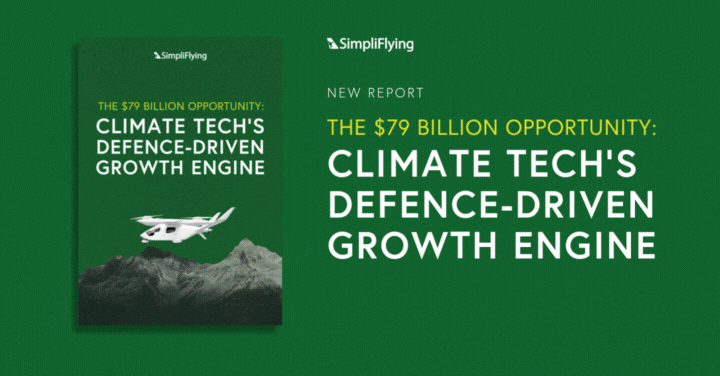New report: Climate tech’s defence-driven growth engine
Our report explores a transformative opportunity: militaries, responsible for 5.5% of global emissions, are becoming early adopters of climate technologies.
What does military spending have to do with climate innovation in aviation? More than you'd think.
As defence budgets surge across Europe and North America, militaries are starting to adopt technologies aviation has been exploring for years: synthetic fuels, electric propulsion, and off-grid energy systems.
But in the defence sector, these technologies aren’t being held back by cost-per-litre debates or certification bottlenecks. They’re already being deployed because they solve immediate operational challenges.
The $79 billion opportunity
Militaries now account for around 5.5% of global emissions—more than the commercial aviation sector. But what’s changing isn’t the emissions profile. It’s the strategic calculus. Energy supply chains are now seen as liabilities, and climate-aligned technologies are being adopted for their tactical benefits: reduced fuel dependence, quieter operations, faster deployment, and greater autonomy.
That shift is happening quickly, and at scale.
Europe is mobilising up to €800 billion in additional defence investments by 2030.
Climate tech with direct relevance to defence—spanning energy, mobility, materials, and AI—is projected to exceed $79 billion globally by 2029.
This convergence is creating new momentum for technologies that aviation has struggled to scale alone.
The technologies taking off
Our new report highlights four key technologies now gaining traction in defence circles:
Synthetic fuels: Portable power-to-liquid systems are under development to produce drop-in fuels using water, CO2, and renewable energy. These systems support energy autonomy in remote operations, and mirror the challenges faced by airports looking to localise SAF supply.
Electric and hybrid aircraft: Deployed for short-range missions where noise, emissions and heat signatures matter. They offer simpler logistics and lower maintenance—making them relevant for regional and sub-regional aviation use cases.
Enhanced geothermal systems: Providing secure, always-on power at military bases. These systems could also support remote airport infrastructure, especially where grid reliability is limited.
Hybrid ground vehicles: Currently achieving 15–25% fuel savings and offering onboard power generation. Their capabilities align closely with the evolving needs of airport ground operations.
A new ecosystem for climate innovation
The defence sector’s urgent need for energy autonomy is turning it into a testing and innovation lab for climate tech. But unlike Silicon Valley’s consumer-facing innovations, this is a world where resilience, performance, and strategic independence are the core metrics.
This creates a major opportunity for aviation stakeholders:
For innovators: Defence provides testing grounds, funding, and early customers for technologies that could later enter commercial aviation.
For airlines and airports: Understanding this ecosystem can inform longer-term decarbonisation strategies and help derisk emerging technologies.
For investors: Defence-climate is one of the fastest-growing segments in the dual-use innovation space, with real momentum and political support.
It’s time to widen the aperture. What’s tested in the harshest conditions on earth may well be what powers our future skies.





